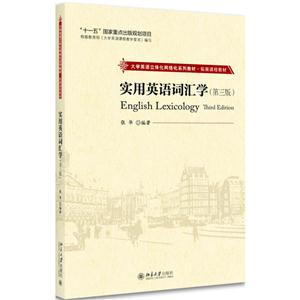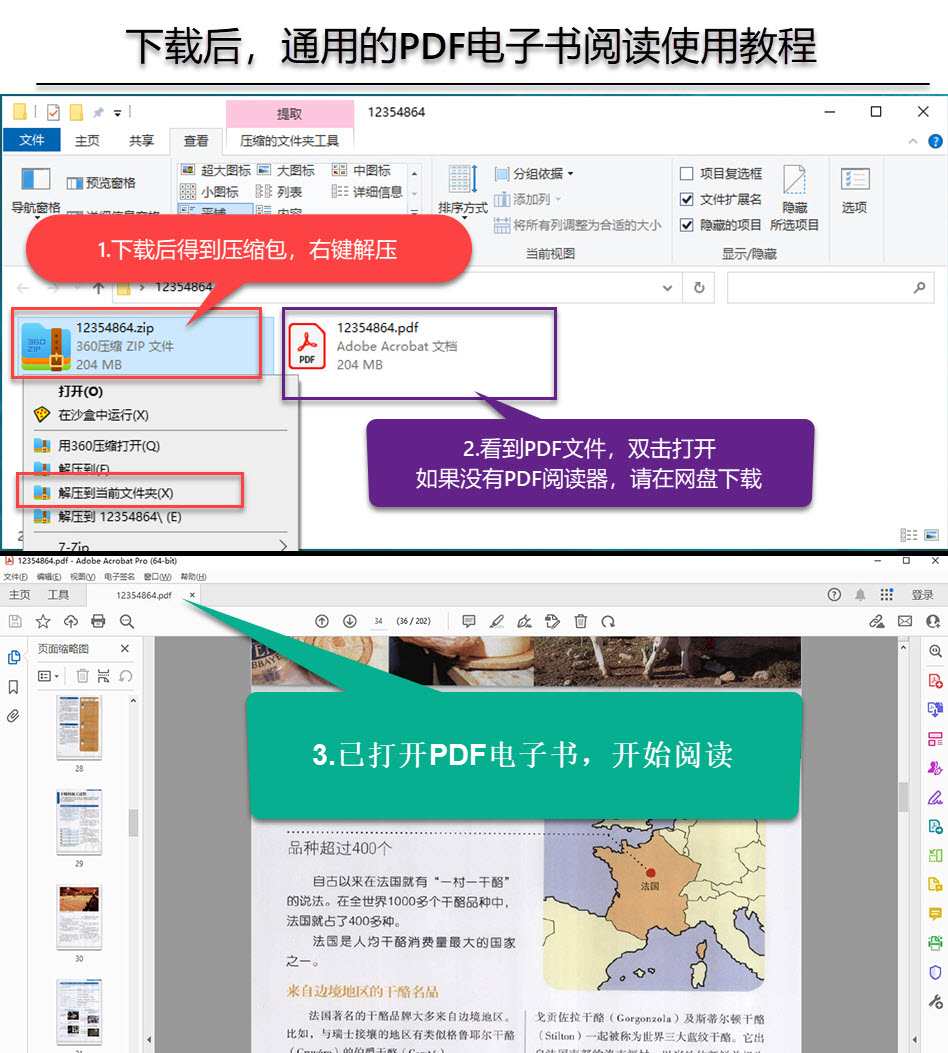实用英语词汇学-(第三版)
本书特色
[
《实用英语词汇学(第三版)》全面地介绍了词汇学的基本概念、英语词汇的历史发展、词根词缀的构成、词汇意义、词汇意义的关系变化以及词义在语境中的作用。本书修订版一方面加强了词根和词缀部分的练习数量和难度以帮助学习者提高英语构词能力和词义理解能力,另一方面着重强调词汇意义与语境的关系,因为只有通过语篇尤其是大量真实语料的阅读才可以掌握词义。每章后配有相当数量的练习,可以有效地帮助学生了解词义在语篇中的关联,克服词汇理解在语篇阅读中的瓶颈,在阅读理解中寻找解决词汇问题的方法。
]
内容简介
[
通过词汇学的学习,英语在学习者心中的定义从一种工具转变成了一种文化,以词素学习为媒介去探求词源,让看似**组合的字母序列变成了演化的历史记录,正如西方一句谚语所说:Word itself is civilization。从词素这个细碎的语言现象中,汲取千百年来西方文明长河中沉积下来的人文养分,对词汇形态结构的学习加深并拓宽了对整个西方文化的理解,寻本溯源是个有趣的过程。《实用英语词汇学》第三版拓展了词汇意义和词汇关系章节内容,与其内容配套的练习量增大,希望在准确地使用词汇、增强搭配意识、提高写作能力方面让学生学有进步并且学有心得。
]
作者简介
[
张华,北京大学外国语学院英语系副教授,常年开设英语词汇学、澳大利亚社会与文化等课程,曾荣获2009-2010年度澳中理事会奖,张华副教授自2009年春季开设全校性英语专题课“澳大利亚概况”,曾获得了第二届北京大学网络课程大赛三等奖。
]
目录
Chapter 1 Lexicology and basic concepts of words and vocabulary1.1 The definition of English lexicology1.1.1 The domains of English lexicology1.1.2 Methods of study of lexicology1.2 The definition of word1.3 The definition of vocabulary1.4 Classification of words1.4.1 Full word and form word1.4.2 Popular word and learned word1.4.3 Abstract word and concrete word1.4.4 Transparent word and opaque word1.4.5 Polysemic word and monosemic word1.4.6 Native word and loan word
Exercises
Chapter 2 The development of the English vocabulary2.1 The world languages2.2 Language classifications2.2.1 Morphological classification2.2.2 Structural classification2.3 The Indo-European Family2.4 The historical overview of English vocabulary2.5 Three main sources of new words of the present-day English vocabulary2.5.1 The rapid development of modern science and technology2.5.2 Social, economic and political changes2.5.3 The influence of other cultures and languages2.6 Three modes of vocabulary development2.6.1 Creation2.6.2 Semantic change2.6.3 Borrowing
Exercises
Chapter 3 The structure of English words and word-formation in English3.1 The structure of English words3.1.1 The morphological structure of words3.1.2 Types of morphemes3.1.3 Root, stem and base3.2 Word-formation in English3.2.1 Affixation 3.2.2 Compounding3.2.3 Conversion3.2.4 Blending3.2.5 Clipping3.2.6 Acronymy3.2.7 Back-formation
Exercises
Chapter 4 Word meaning and changes in word meaning4.1 Meaning4.1.1 Analytical and operational definitions of meaning4.1.1.1 Analytical (referential) definitions of meaning4.1.1.2 Operational (contextual) definitions of meaning4.1.2 Meanings of meaning 4.1.2.1 Reference4.1.2.2 Concept4.1.2.3 Sense4.1.3 Types of motivation4.1.3.1 Onomatopoeic motivation 4.1.3.2 Morphological motivation4.1.3.3 Semantic motivation4.1.3.4 Etymological motivation4.1.4 Types of meaning4.1.4.1 Grammatical meaning4.1.4.2 Lexical meaning4.1.4.3 Conceptual meaning4.1.4.4 Associative meaning4.2 Changes in word meaning 4.2.1 Can meanings change?4.2.2 Types of changes4.2.2.1 Extension4.2.2.2 Narrowing4.2.2.3 Elevation4.2.2.4 Degradation4.2.3 Causes of changes4.2.3.1 Linguistic factors4.2.3.2 Extra-linguistic factors
Exercises
Chapter 5 Sense relations5.1 Polysemy5.1.1 Two approaches to polysemy5.1.2 Two processes of development5.2 Homonymy5.2.1 Types of homonyms5.2.2 Origins of homonyms5.3 Synonymy5.3.1 Sources of synonyms5.3.2 Discrimination of synonyms5.4 Antonymy5.4.1 Types of Antonyms5.4.2 Characteristics of antonyms and use of antonyms5.5 Hyponymy5.5.1 Superordinate and subordinate terms5.5.2 Effect of them in use
Exercises
Chapter 6 Collocation6.1 Syntagmatic and paradigmatic relations6.2 Collocation6.2.1 The definition of collocation in the 1950s6.2.2 Neo-Firthians in the 1960s6.2.3 The study of collocation in the 1970s6.2.4 The rise of Corpus linguistics in the 1980s.6.3 Association and collocation6.3.1 The “adjective noun” association and collocation6.3.2 The “verb noun” association and collocation6.4 Pseudo-synonyms and inappropriate collocation
Exercises
Chapter 7 Meaning and context7.1 Types of context7.1.1 Linguistic context7.1.2 Extra-linguistic context7.2 The role of context7.2.1 Elimination of ambiguity7.2.2 Clues for inferring word meaning in context
Exercises
Chapter 8 English dictionaries8.1 The development of dictionaries8.1.1 The origins of English dictionaries8.1.2 The first English dictionary8.1.3 Modern English dictionaries8.2 Types of dictionaries8.2.1 Linguistic and non-linguistic dictionaries8.2.2 Monolingual and bilingual dictionaries8.2.3 General-purpose and specific-purpose dictionaries8.3 Using a dictionary8.3.1 The dictionary entry8.3.2 Spelling8.3.3 Pronunciation8.3.4 Parts of speech and inflected forms of words8.3.5 Labels8.3.6 The definition8.3.7 Etymology8.3.8 Synonyms
Exercises
Keys to Exercises
附录一:英语词汇学术语表
附录二:希腊拉丁词根和词缀
(一)希腊拉丁词根
(二)希腊拉丁词缀
References
封面

书名:实用英语词汇学-(第三版)
作者:张华
页数:224
定价:¥39.0
出版社:北京大学出版社
出版日期:2017-09-01
ISBN:9787301286517
PDF电子书大小:67MB 高清扫描完整版
本文标题:《实用英语词汇学-(第三版)》PDF下载
资源仅供学习参考,禁止用于商业用途,请在下载后24小时内删除!

